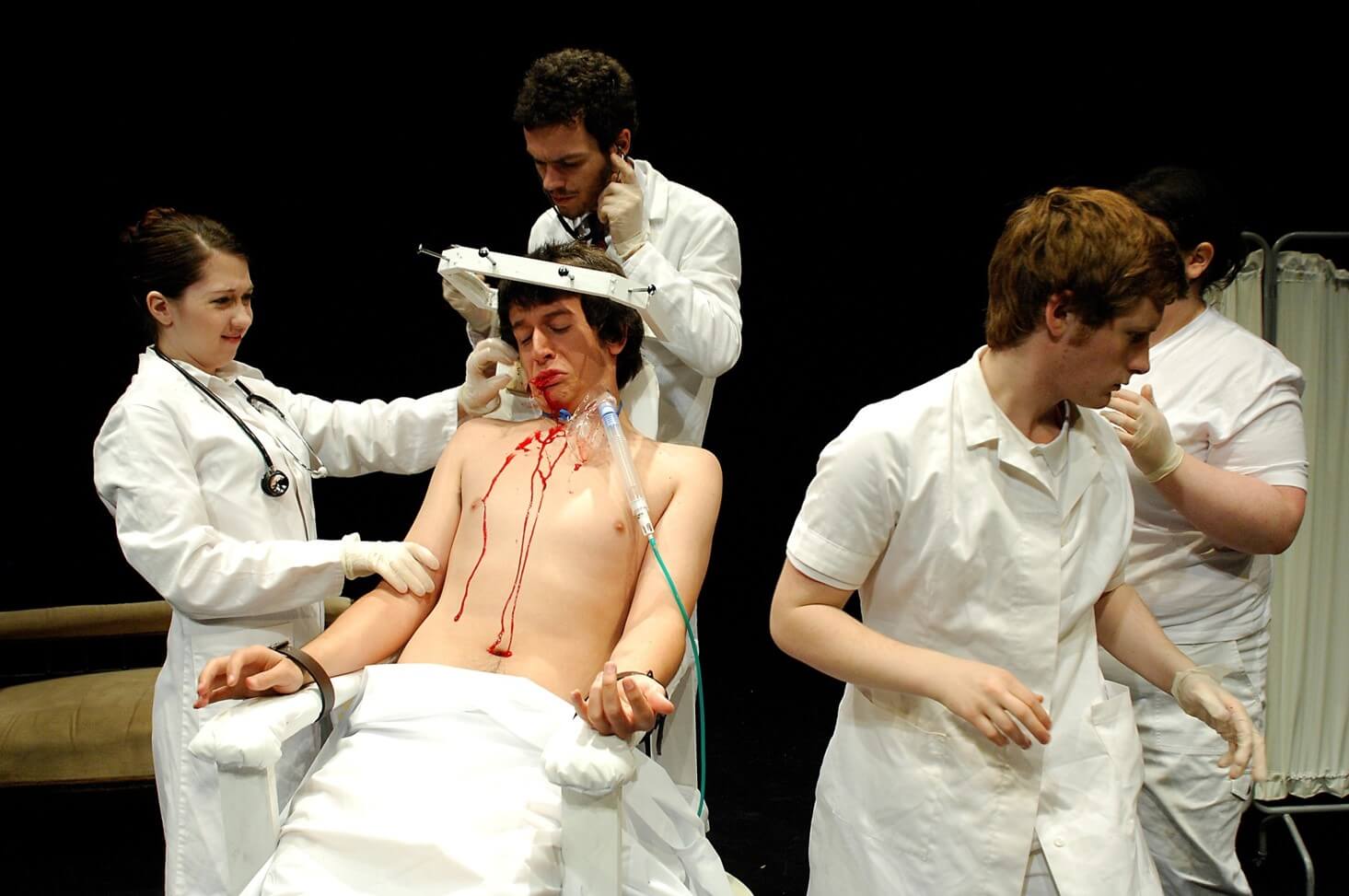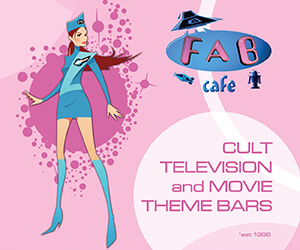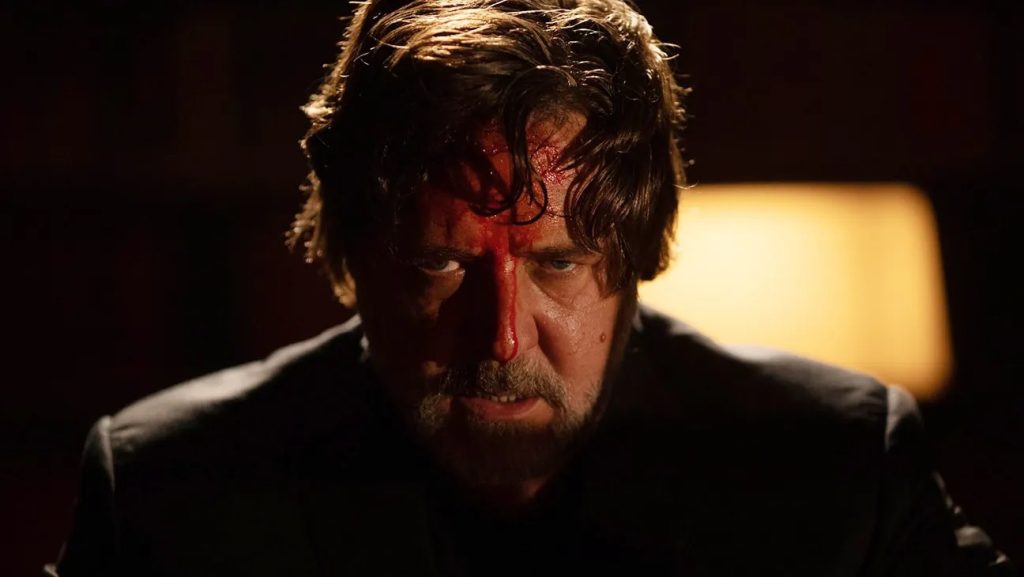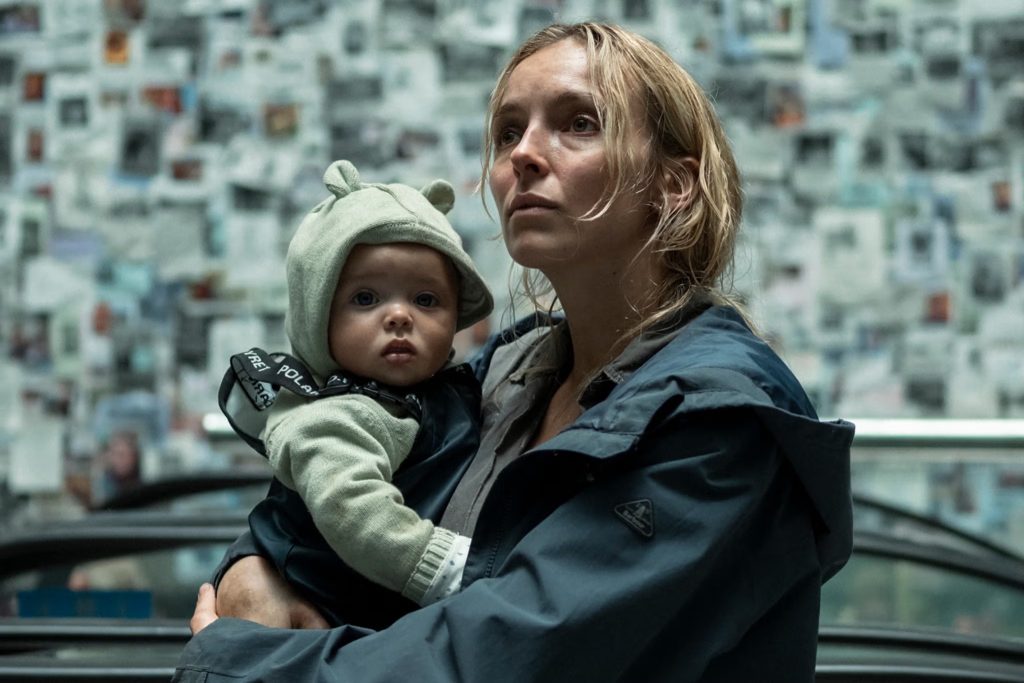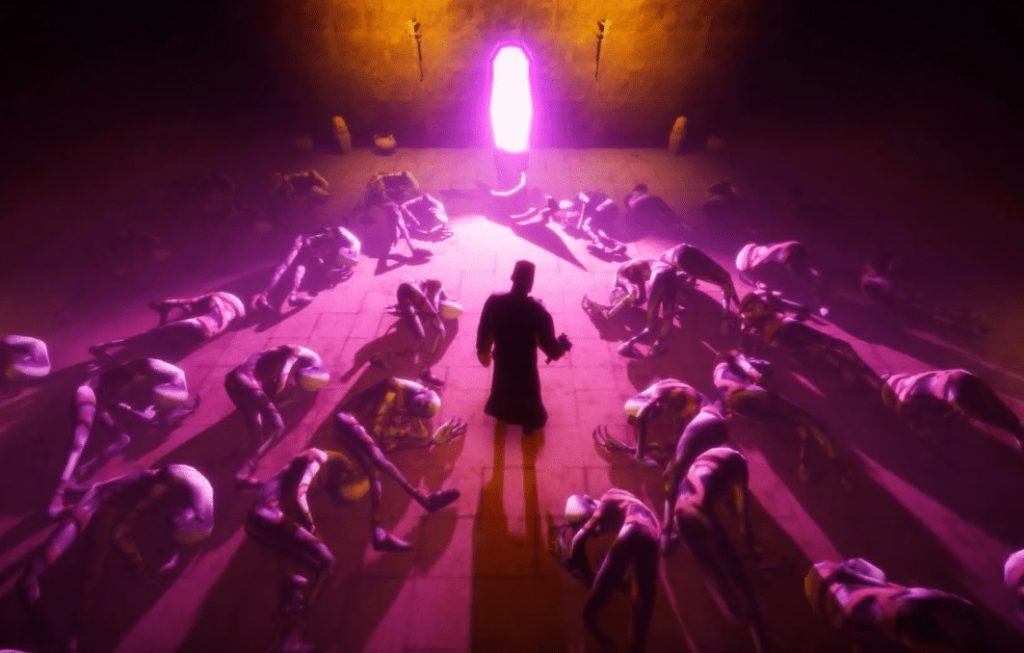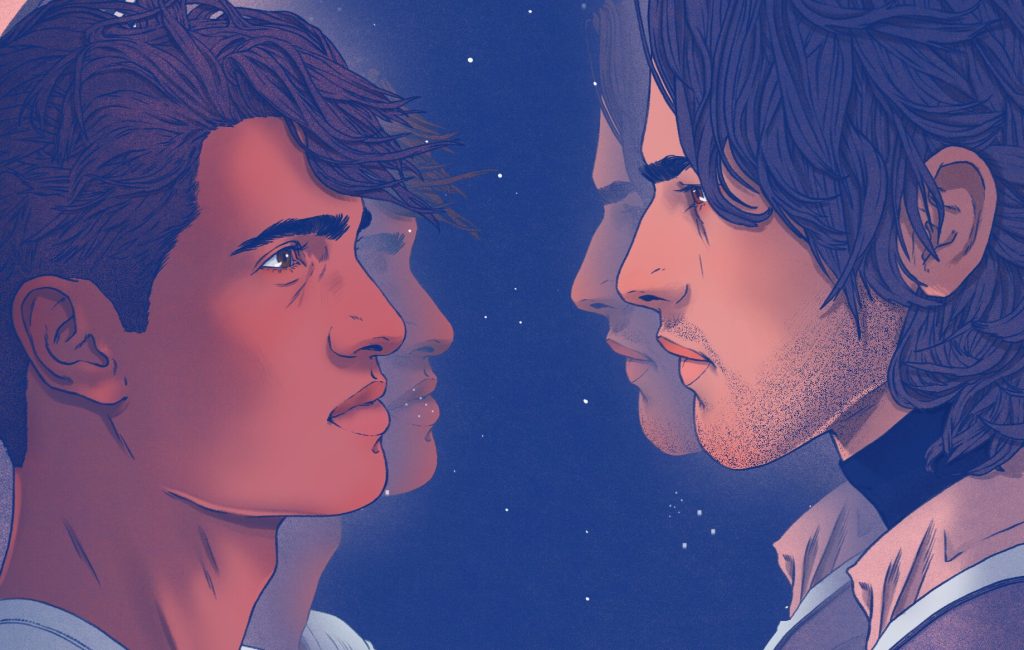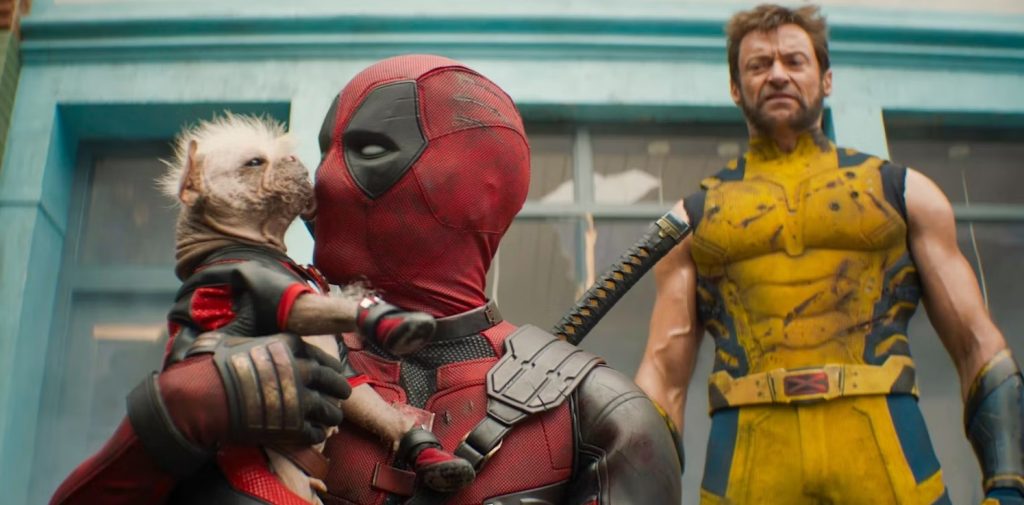Richard J Hand is one of the foremost experts in ‘Grand-Guignol’, the ‘Granddaddy of Modern Horror’, which has influenced many of the classic horror films of past and present decades. STARBURST had the pleasure of speaking with him after his excellent lecture ‘Horror and Hilarity: The Legend of the Grand-Guignol’, which took place in London in February 2019.
STARBURST: When you look at the whole history of ‘Grand-Guignol’, would you say it encompasses everything we have grown to know and love, or are there specific films and subgenres of horror that it focuses on?
PROFESSOR RICHARD J HAND: What is probably most important to note about the original Théâtre du Grand-Guignol is that, despite being the ‘Theatre of Horrors’, it was not interested in the supernatural or the fantastic: rather, the horrors it focused on were possible. It emerged out of the tradition of realist and naturalist drama but pushed it to the max with graphic displays of violence with plays – often based on true news stories – of real-life terror and extremity accompanied with ultra-realistic special effects. The repertoire of the original theatre loved to start with a slice of life but descend into full-blown, full-blooded melodrama – without the audience noticing the join. The Grand-Guignol is full of monsters, but these are emphatically human monsters. So, in this way, Grand-Guignol is most accurately applied to those tales of feasible terror: serial killers, vendettas and revenge attacks, escaped axe murderers, lunatics who have taken over the asylum, deluded doctors and mad scientists whose experiments are less grandiose and a bit more squalid than Doctors Frankenstein or Jekyll. In terms of cinema, the most truthfully Grand-Guignol are therefore films like Psycho, Whatever Happened to Baby Jane?, Peeping Tom, Blood Feast, Texas Chain Saw Massacre, Halloween, Silence of the Lambs, Saw, Hostel and so on. At the same time casting a long shadow over the splatter genre; we must remember how much the Grand-Guignol audience relished the acting ensemble and core actors – such as its resident ‘scream queen’ Paula Maxa – and this emphasises how Vincent Price, Christopher Lee, Barbara Steele, Jamie Lee Curtis through to Vera Farmiga, Eva Green and Sarah Paulson have acted in the Grand-Guignol tradition of heightened performance whatever the specific horror narrative might be.
What struck us about your presentation in London recently was how naïve we have become in thinking we knew what it was and how clear a lot of the influences are. When did you first become interested in ‘Grand-Guignol’ and what specifically was it that sold it to you?
I remember as a child getting Denis Gifford’s book A Pictorial History of Horror Movies (1973) for Christmas. With a lurid green cover with drawings of Karloff, Cushing, Lugosi and others, I read it again (and again). The first chapter was called ‘How Grand was My Guignol’ and gives a concise outline of the Grand-Guignol before its detailed and wonderfully illustrated journey through horror film. It was then years later that I read Mel Gordon’s Theatre of Fear and Horror (1988) with its amazing pictures, plot summaries and sample scripts. When Michael Wilson and I started working together as lecturers at the University of Glamorgan in Wales, we shared a mutual admiration of Gordon’s book but wanted to learn more. So, we read Agnes Pierron’s excellent French anthology of Grand-Guignol plays (1995), visited library collections in Paris and located numerous original French scripts. We set up the Grand-Guignol Laboratory where we worked with drama students in mounting full in-house and touring productions of translated Grand-Guignol plays with recreations of special effects and the whole Grand-Guignol ‘experience’.

A lot of the Halloween and Chainsaw generation first heard the term via John McCarty’s classic horror volume Splatter Movies – Breaking the Last Taboo. Did you read his book and how comprehensive was the chapter he covered compared to your own books?
Yes, indeed. John McCarty gives an excellent account of the significance of the Grand-Guignol as the ‘root’ of the splatter genre and persuasively argues how Hammer’s landmark film The Curse of Frankenstein is an assimilation of the traditions of the French Grand-Guignol and the English Gothic. He sees the spectre of the Grand-Guignol in subsequent high points of cinematic horror: persuasively arguing, for instance, that The Exorcist is Grand-Guignol on an operatic scale. McCarty made a very important intervention in popular horror studies which signals, as it were, that before horror cinema there was horror theatre. There are even more depths and connections than McCarty has space to discuss: the story of the Grand-Guignol is richer and richer the more we look into it…
Censorship certainly was a big issue both here and in France and in the UK particularly with the Lord Chamberlain’s Office at the time when it came to London in the 1920s. Would you say the political and world context ‘Grand-Guignol’ found itself at the heart of helped shape it’s evolution until its demise?
Luckily, the Grand-Guignol had a comparatively easy ride in Paris, although there was considerable outrage at its use of the guillotine in various plays – a serious emblem of the state some felt should not be parodied on stage – and various critics (as well as, no doubt, some spectators) disapproved of its explicitness and immorality. In the notable London experiment in Grand-Guignol in the early 1920s, censorship was a complete nightmare for the company. The Lord Chamberlain’s Office – in charge of licensing plays for public performance in the UK – took great exception to the Grand-Guignol, including its comedies as much as its horror plays. It disliked this continental import and enforced edits and even banned outright numerous plays on the grounds of indecency, obscenity or profanity. Eventually, the Grand-Guignol in London will call it a day after being under the censor’s microscope for so long. However, the Grand-Guignol will recur on the London stage. We must remember that the Grand-Guignol used reality for its inspiration: both in France and the UK, there are remarkable and uncompromising plays about the First World War, plays which must have been arresting for the audience. Similarly, the Parisian theatre staged a play about the Boxer Rebellion and the brutal experience of the French legation siege which reconstructed recent horrors for its enthralled, perhaps voyeuristic, audience. The Grand-Guignol stayed open during the Second World War and was popular with the occupying German forces. The sadistic terrors of the Grand-Guignol probably didn’t seem quite so playful for the Parisians after that.
It was interesting to note that Noël Coward and Joseph Conrad, both classic writers, had an interest in ‘Grand-Guignol’. Tell us more about their contributions and how successful they were.
Noël Coward wrote The Better Half for the London Grand-Guignol. He was only twenty-two years old at the time. It is a dark and delectable comedy which is as witty as one would expect from Coward, in which we see a frustrated woman encouraging her rather bland husband to run off with her best female friend for the sake of everyone’s mutual satisfaction. Things turn very Grand-Guignol when her husband threatens to kill her. However, all ends happily. Indeed, it is interesting that the Lord Chamberlain didn’t object to a happy ending in which a married woman runs off ‘to find a lover and live in flaming sin – possibly at Claridges’. A writer at the other end of his career, Joseph Conrad, was also interested in seeing the Grand-Guignol imported to Britain. This grand old man of English letters went to see a Grand-Guignol performance and immediately wrote Laughing Anne, a very violent thriller set in Macao in which a group of gangsters attempt to rob a boat transporting money. Unfortunately, the Grand-Guignol politely declined staging the play as it was difficult to stage and, in two acts, probably somewhat long for the classic Grand-Guignol formula of short plays. I was lucky enough to be the first director to stage the play in 2000, eighty years after it was written.
In terms of putting on ‘Grand-Guignol’ – type productions these days – and we understand there are several companies throughout the world, including one in Liverpool who have put on regular productions. What advice would you give any enterprising theatre companies in terms of securing the performing rights and what should they be careful of in terms of the graphic violence that defines it?
I would, of course, encourage theatre companies to explore the Grand-Guignol. It is a wonderful form of theatre and for companies can be enormous fun to stage. All of the translations in the books by Mike Wilson and I are free to perform: all we ask is that companies get in touch with pictures or posters – we love to hear about any Grand-Guignol shows and add any documentation to our collection! Be warned: although the Grand-Guignol is fun and playful for a company and audience, it does handle very dark material. In this way, we always attempt to balance the horrors on display so that we don’t have an evening of plays in which just women are victims but ensure something more balanced and inventive. Similarly, we have had spectators faint during graphic scenes and I have been in shows where audience members have walked out. It may be theatre, but it is real people enacting realistic illusions on stage. The Grand-Guignol’s all-important douche écossaise (interspersing horror plays with comedies) is significant here: the Grand-Guignol was a theatre of laughter as well as its more famous horrors. Theatre ensembles must not forget that. Keep it intense and compelling but always keep it fun and playful. At the end of the day, the Grand-Guignol is something of an adrenaline-fuelled thrill-ride.
Tell us more about your experiences working on productions and some amusing and interesting anecdotes from a selection of these.
It is great fun putting together Grand-Guignol plays. I have staged all kinds of theatre but some of the biggest laughs and closest ensembles have emerged while doing Grand-Guignol productions. The actors may do awful things to each other on stage, but behind the scenes there is real camaraderie – there has to be! We once took a show to the Edinburgh Fringe which included a finale in which a female doctor castrated a male patient as an act of revenge. We even had a real doctor take the actors through a detailed description of the castration procedure in rehearsal. In early performances of this immaculately rehearsed play, we went to the trouble of ordering numerous pairs of sheep’s testicles from a specialist butcher. However, during one performance I was in the audience and overheard a spectator whisper in all earnest ‘Look, they are using plum tomatoes’. After this, we revised the scene so that the doctor’s scalpel punctured a concealed condom filled with stage blood. The resulting pool of red, gradually spreading over the patient’s white boxer shorts and dripping onto the floor proved to be much more effective. It gave us the desired result for the rest of the run: it made every male member of the audience gasp and cross his legs and every female roar with laughter. Sometimes, less is most definitely more!
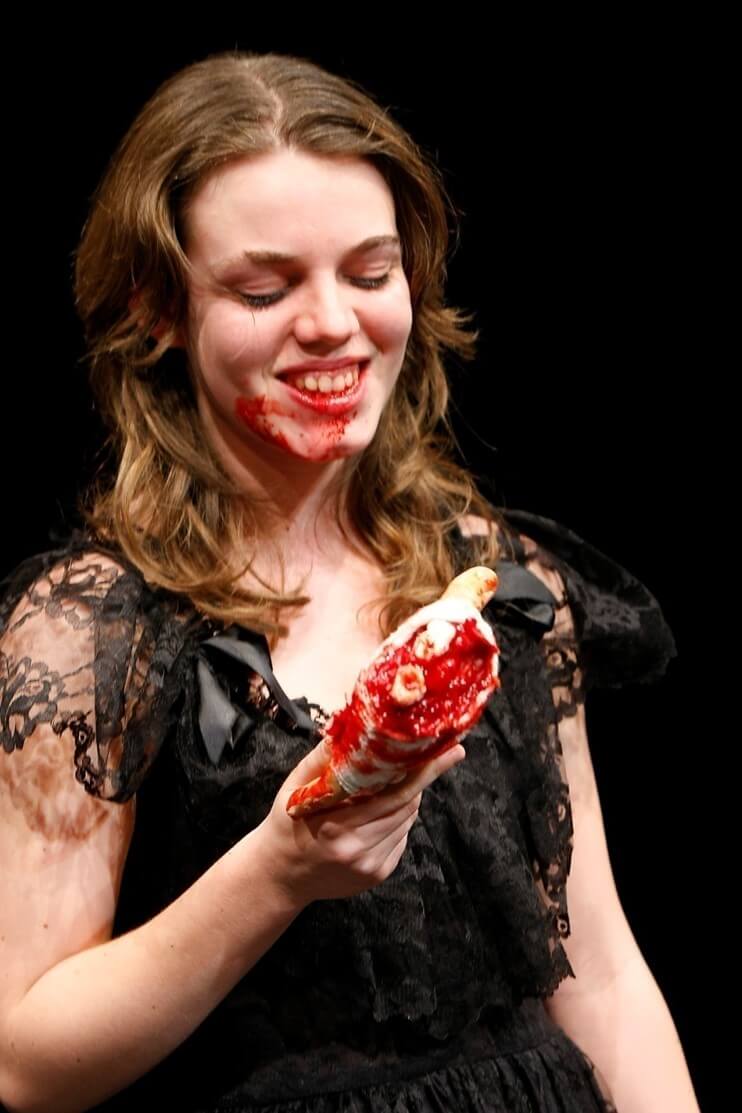
What productions should people start off with in terms of reading and research?
I would obviously recommend Mike and my books! Each contain ten or more plays and substantial context and, in book 3 (Performing Grand-Guignol, 2016), lots of ‘how to’ stage a Grand-Guignol performance. In addition, do check out Mel Gordon’s classic study – it will certainly whet your appetite. Just as importantly, go and see some horror theatre in the broadest sense! There are major works like The Woman in Black and revivals of Jeremy Dyson and Andy Nyman’s Ghost Stories or the touring thrillers of Peter James. Also, festivals such as the London Horror Festival and the London H. P. Lovecraft Festival host wonderful displays of fringe-scale horror theatre. If you get chance to go further afield, go and see the Molotov Theatre Group in Washington DC, the Grand Guignol in Milan, or Vigor Mortis in Brazil – great custodians of the Grand-Guignol.
Please tell us about some of the key writers who contributed the classic works in their native France.
The single most important writer at the Grand-Guignol was undoubtedly André de Lorde, the prolific ‘Prince of Terror’ who joined in 1901 and wrote over 150 horror plays. Even when criticising the themes or morality of his plays, critics like the influential Georges Bourdon had to admit that ‘nobody surpasses Monsieur de Lorde in theatrical technique’. De Lorde was a great and generous collaborator, writing with experts from the world of science, history, psychology, and criminology to ensure the plays were as accurate as possible. It is also worth noting that other major writers were drawn to the Grand-Guignol: Maurice Level (much admired by H. P. Lovecraft), Gaston Leroux (Phantom of the Opera), Maurice Renard (The Hands of Orlac), and Octave Mirbeau (The Torture Garden) all write original plays for the Grand-Guignol.
Every art form evolves and has to move with the times to survive. Could contemporary theatrical companies create more ‘Grand-Guignol’ influenced modern works, in the same way that Dracula influenced Stephen King’s Salem’s Lot for example?
When I work with students and professional actors on the Grand-Guignol, I am always emphasising the contemporary potential of the form. Escaped lunatics and outrages in the colonies are probably dated anxieties which might make us giggle more than gasp. So what scares us now? Such angst was the spirit of the Grand-Guignol and contemporary interpretations (including our own) have created some fantastic modern terror plays: the world of social media, internet dating, house sharing, and fast food home delivery is ripe for latter-day Grand-Guignol! Fascinatingly, the content may have changed but the formula would be something de Lorde could still recognise!
Finally, what is your goal in terms of spreading the word about ‘Grand-Guignol’?
It is a shame that the original Théâtre du Grand-Guignol is long gone. Although the original venue is still a theatre the inside has been transformed and the giant angels and other residue of its days as a deconsecrated chapel are no more. The first-hand memories of the original are rapidly receding if not almost vanished. But the legend lives on. And unlike some legends, the true story of the Théâtre du Grand-Guignol is perhaps even more rich and fascinating. A world of gruesome tales of true terror, eye-gouging and blood-letting, tragic victims and sadistic villains. In other words, great writing, amazing special effects, and superb acting. In other words, a bloody good night out that can still be hugely thrilling and hilarious when restaged – the ultimate three-dimensional horror experience!
Check out Professor Hand’s books on Amazon.

